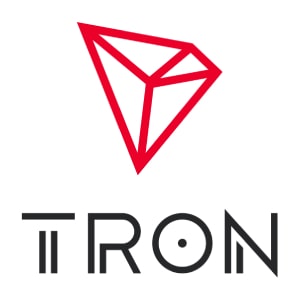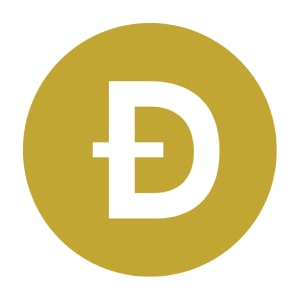
Bitcoin is currently the most popular Cryptocurrency in circulation. But with all of its popularity, it also has a lot of downsides. For one, it’s been banned from many countries, and for another, there are transaction fees associated with using Bitcoin that can be quite high at times. Also, with BTC reaching the $48,500 mark, many investors find it hard to invest in the trading market. Luckily, there are over 8,000 cryptocurrencies in circulation as of December 2021, which is one reason why you can find plenty of options to invest in blockchain. Check this exhaustive list if you’re looking for Bitcoin alternatives that still offer everything you need but don’t have any problems mentioned above.
Disadvantages of Bitcoin
- Bitcoin is a volatile asset, when it comes to investing. While the prices may reach the ceiling so fast, they can also come crashing down at the same pace.
- Bitcoin is also a risky investment choice as there are no regulations in place, so investors can’t really expect any sort of protection or relief when it comes to the law.
- Any transaction involving Bitcoin is irreversible, and thus there is also a risk of fraud or scam. And once the transaction has been authorized, the money’s gone.
- There are still not many applications for the cryptocurrency, Bitcoin is not widely accepted or even recognized as a legal tender.
Best Bitcoin alternatives
Being a cryptocurrency, there are numerous options you can choose other than Bitcoin. One of the biggest reasons for that is the amount of energy it takes to operate the Bitcoin infrastructure. There are several other factors as well. These are the best Bitcoin alternatives you could go for –
1. Ethereum (ETH)

Ethereum is the #2 Cryptocurrency with a market cap of $19.16 billion and an average daily trading volume of $476.53 Billion, according to Coinmarketcap. It’s also considered Bitcoin’s biggest rival because it has slightly different features than Bitcoin, like offering smart contracts that allow Ethereum apps and Initial Coin Offerings (ICOs) to be built on the Ethereum blockchain. Ethereum was created by Vitalik Buterin in 2013 and launched in 2015, and it has a total supply of around 105 million coins.
The price of Ethereum peaked at $1400 in January 2018 but has since crashed along with the rest of the cryptocurrency market. As of December 2021, it has gained momentum sharply. ETH Offers smart contracts that allow for more complex transactions than BTC does.
2. Binance Coin (BNB)

Binance Coin (BNB) is a cryptocurrency that serves as a payment mechanism for fees levied by the Binance Exchange. It is the third-largest Cryptocurrency by capitalization. Those who utilize the token as a payment instrument for the exchange may save money on their purchase.
Binance Coin, better known as ‘BNB,’ is the Cryptocurrency that powers Binance’s decentralized exchange. The Binance Exchange was created by Changpeng Zhao and is one of the most popular exchanges in terms of trading volume.
Binance Coin was originally an ERC-20 token that functioned on the Ethereum blockchain. It ultimately got its own mainnet launch. The network employs a PoS consensus mechanism. Binance Coin has a market capitalization of $91.5 billion as of November 2021, with one BNB worth $545.
3. Litecoin (LTC)

Litecoin was created by Charlie Lee in 2011 as a fork of Bitcoin and is currently the #sixth largest cryptocurrency by market cap with a value of $10.5 billion and an average daily trading volume of $1.5 billion. Litecoin is very similar to bitcoin in that it’s also a peer-to-peer digital currency but has some different features. You can purchase or transact much faster on the Litecoin blockchain than on the Bitcoin blockchain. The difference is literally about two and a half minutes for Litecoin compared to about ten minutes for Bitcoin. It has a total supply limit of 69 Million coins. The price of Litecoin peaked at $152 in December 2021, so it’s still a perfect option for micro-trading.
4. NEO

NEO was created in 2014 by Da Hongfei and Erik Zhang as a decentralized, open-source cryptocurrency and blockchain platform that allows for the development of digital assets and smart contracts. It’s currently the 68th largest Cryptocurrency by market cap with a value of $1.8 Billion and an average daily trading volume of $207 million. NEO is one of the most popular cryptocurrencies among users because it offers high transaction speeds, just like Litecoin.
NEO also has much more functionality than Litecoin, which makes it very useful for investors and businesses looking to trade or hold tokens/coins based on price. It also doesn’t have a total supply limit like Bitcoin does, but rather a maximum of 70 million NEO that will ever be created. The price of Neo as of December 2021 is $26.21.
5. Cardano (ADA)

The Cardano project began in 2015 to change the way cryptocurrencies are designed and developed. The ADA cryptocurrency is what fuels transactions on its blockchain network. It’s currently the sixth-largest cryptocurrency by market cap with a value of $42 billion and an average daily trading volume of $1.3 billion.
Cardano is very different from other cryptocurrencies on this list because it isn’t just a digital currency, but also a decentralized computing platform that allows for developing smart contracts and dApps. One of the best parts of investing in Cardano is the price ($1.26) which is easily affordable for small investors.
6. Ripple

Ripple is a blockchain network that was developed to provide quick and secure banking transactions. Its reliance on the blockchain made it a reliable transaction network. As such, it enjoys more trust when it comes to cryptocurrency.
Since the Ripple network scores more highly than its Bitcoin counterpart thanks to the low processing time and similarly lower transaction charges. Hence, it is not far-fetched to think of Ripple as a valid alternative to Bitcoin.
7. Stellar (XLM)

Stellar was created in 2014 by Jed McCaleb and Joyce Kim as a decentralized, open-source payment network that allows for the transfer of money in any currency to anyone in the world. The XLM cryptocurrency is what fuels transactions on its blockchain network.
It’s currently the 26th largest Cryptocurrency with a market cap value of $6.4 billion and an average daily trading volume of $698 million. It has a total supply limit of more than $50 billion XLMs. The price of XLM as of December 2021 is $0.26; so, it’s a good-to-go option for new entrants in the crypto trading market.
8. EOS

EOS is a new project built by the company called Block.one and has been in development since 2017, with its first ICO taking place at the end of June that year. The Cryptocurrency powering transactions on the EOS blockchain network is EOS, currently valued at $3.2 billion. A daily volume is $1.15 million despite having only gone live about four months ago.
So far, EOS has largely flown under the radar of most individual investors, but that should change this year as they get around to marketing and PR their projects more heavily. The price has already seen some solid gains in early 2019, so it’s likely just a matter of time before mainstream media starts talking about it.
9. TRON (TRX)

Like EOS, Tron is another project built by the company Block.one but has been in development since early 2017. It was launched as an ERC20 token on Ethereum but will have its own mainnet launching sometime this summer, so you’ll be able to swap your existing ERC20 tokens for newly minted ones after it launches.
The Cryptocurrency powering transactions on the TRON blockchain network is called Tronix (TRX). It has a circulating supply of $101 billion with a total of $7.9 billion TRX that will ever be created. As of December 2021, it’s trading at $0.02.
10. Polkadot

Polkadot (DOT) is a novel PoS cryptocurrency that provides interoperability between various blockchains. Its protocol connects private and public blockchain networks and oracles, allowing systems to collaborate under one roof. The relay chain at the heart of Polkadot is a core component that allows for the cross-network compatibility of diverse networks.
Developers can also create new blockchains with Ethereum, but they must build their own security systems, leaving smaller projects vulnerable to attack. Gavin Wood is a core member of the Ethereum project’s founding team, who had different ideas about the project’s future. Polkadot has a market capitalization of around $25 billion, and one DOT trades for $25 as of December 2021.
11. Solana

Solana is a relatively new cryptocurrency, but it has enough promise that it might actually be widely recognized as a Bitcoin alternative. It is because of its high transaction speed despite the relatively lower cost that many look at it as a potential Bitcoin replacement. Currently, it is trading at $30, which is nowhere near Bitcoin’s $30,506, but for SOL, it is nearly a 6,000% increase since its initial launch in May 2020.
As an open-source decentralized blockchain technology, Solana is also touted as a solution to DeFi. People can also use Solana to build blockchain infrastructure, such as decentralized applications, or DApps.
12. Polygon

Polygon is a layer 2 sidechain that runs alongside the Ethereum blockchain, and trades under the MATIC token. The technology was initially developed to combat the high rate of traffic experienced by Ethereum, but over time, it has gained recognition as an innovative multichain system. The value of Polygon lies in this system, which basically allows it to run multiple blockchains simultaneously using Ethereum’s VM.
The Polygon sidechain utilizes three layers, including Bor, which compiles transactions into blocks, and thus creates a periodic record of the blockchain. Like other recent blockchains, Polygon is also capable of hosting smart contracts, DApps, and NFTs, making it a future-proof technology, and a potential alternative to Bitcoin.
13. Tether

Tether was supposedly the answer to the volatility that the cryptocurrency markets offer. As such, one can view Tether as the most steady coin on the cryptocurrency spectrum, since it is pegged directly to the stable US dollar. Thus, Tether experiences almost no alarming fluctuations, making it a calm and composed alternative to Bitcoin, suitable for those faint of the heart and looking for stability. And this stability alone makes it more popular for the larger trading crowd than Bitcoin.
14. Dogecoin

Billy Markus created dogecoin from Portland, Oregon, in 2013. The company is based around the popular Shibe meme that represents someone who is surprised to an extreme degree or has a feeling of great happiness. This digital currency became very popular on Reddit’s Dogecoin Subreddit, where many users are actively engaged with one another about this emerging coin. Top places for cryptocurrency exchange include Bter and Cryptsy.
You can also mine Dogecoins using traditional computer components like CPUs and GPUs. However, you should know that mining isn’t as profitable as it used to be anymore due to its rise in popularity, so maybe you can withdraw Bitcoin and buy Dogecoins instead ;).